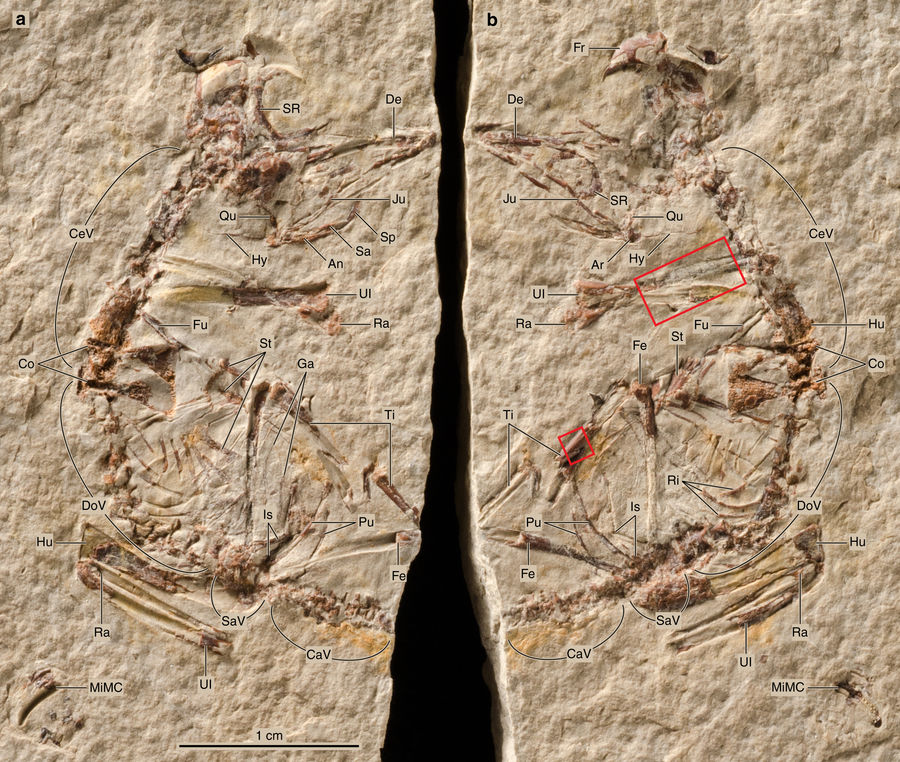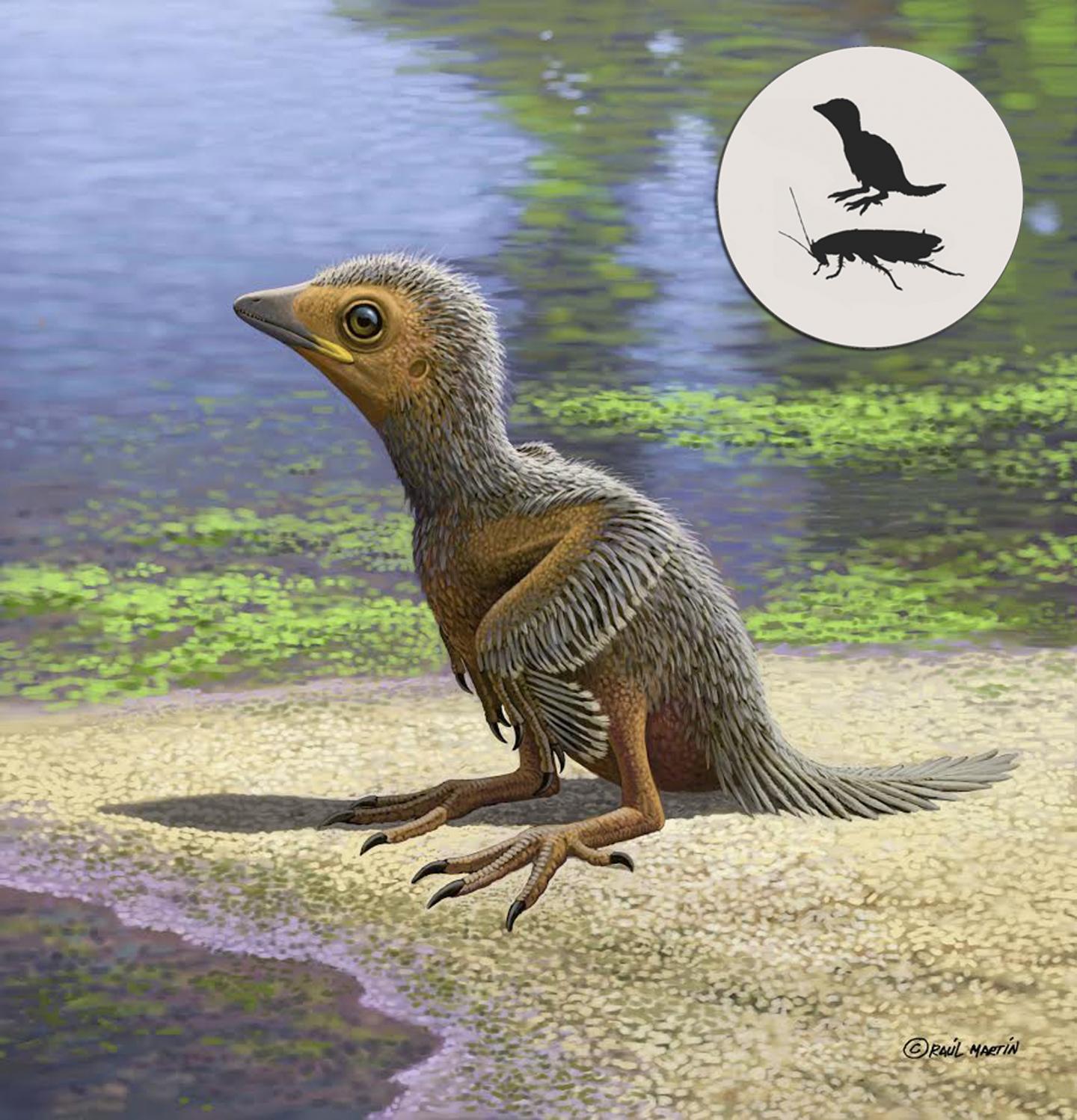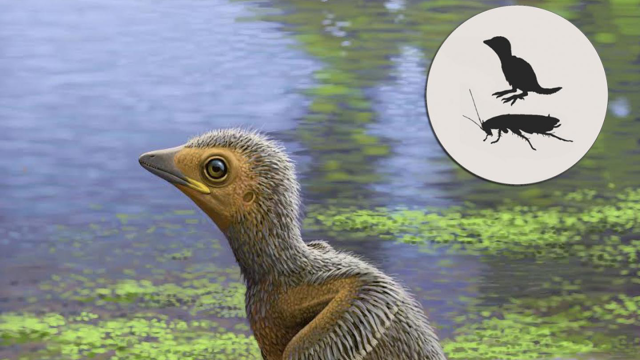Scientists have discovered a nearly complete skeleton of a baby bird only about the size of a cockroach – perhaps the smallest baby bird fossil ever found from the dinosaur era, according to a new paper.
Artist’s impression of the baby bird, based on a recently discovered fossil. Illustration: Raúl Martín (Nature Communications et al 2018)
Not everything was big during the time of the dinosaurs. Among the gargantuan beasts were some of the smallest beings you can imagine, such as this tiny baby bird that lived 127 million years ago. Studying them can shed important light on early avian evolution. Here, the researchers are most interested in how the bird’s tiny bones formed.
“There is a dearth of data” regarding how skeletons form in the earliest birds, according to the paper published yesterday in Nature Communications, thanks to the extreme rarity of fossil bird embryos or babies.

Diagram of the bird fossil on the slab. Photo: Knoll et al (Nature Communications 2018)
The researchers recently found this specimen from the Enantiornithes group of birds in Spain’s Las Hoyas rock deposits. Enantiornithes looked a lot like today’s birds, but had teeth and claws. They were once the most common group of birds around, but are now extinct. This fossil is the smallest near-complete Enantiornithean ever found. It lacked only its feet, most its claws and part of its tail, according to the paper.
The fossil showed no evidence of feathers. The researchers didn’t have enough information to determine whether the bird lacked feathers because it was a baby, or if the evidence of feathers just wasn’t preserved.
There’s not much you can say about a whole species from a single fossil. But this one revealed some interesting things to the scientists when they analysed it with high-energy light from a synchrotron particle accelerator. Its breast bone was soft cartilage and hadn’t formed into bone yet, so it’s unlikely that the bird would have been developed enough to fly, and perhaps would have needed to mature more.

Illustration: Raúl Martín (Nature Communications 2018)
One researcher, Lisa Buckley from the Peace Region Paleontology Research Center in Canada, helped Gizmodo break that down. “One of the big questions with baby Cretaceous birds is if they were precocial (mobile: Think of the little Easter chicks running around, or baby ducks following Mum) or altricial (helpless and nest-bound for the early part of their lives) or somewhere in-between. This study shows that this little bird would not have been ready to fly because the sternum (chest bones) were still cartilaginous. Hopefully more specimens come up!”
And the lack of bone development in this bird differs from other enantiornithes. This suggests, according to the paper, “that the developmental strategies of these [earliest birds] may have been more diverse than previously thought.” Some of these early birds may have been more mature after hatching than others.
This isn’t the smallest bird ever – there are still teeny species of hummingbirds around today. But if you think about it, it’s pretty cool that a fossilised bird the size of a cockroach can shake up what scientists know about how bones developed in the first birds.
